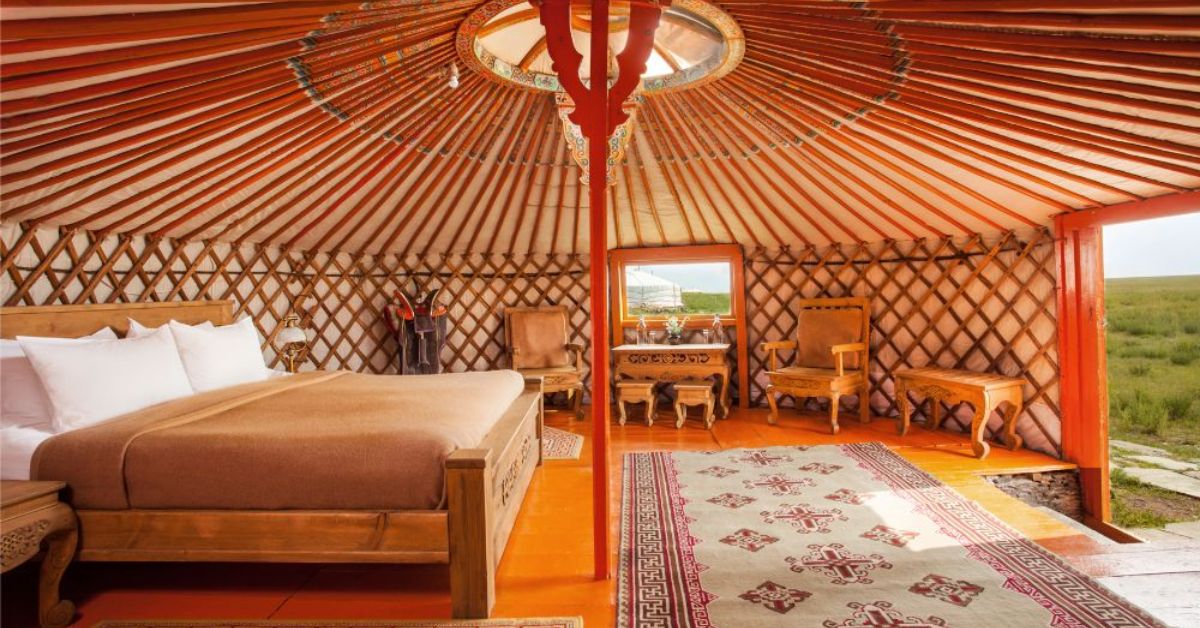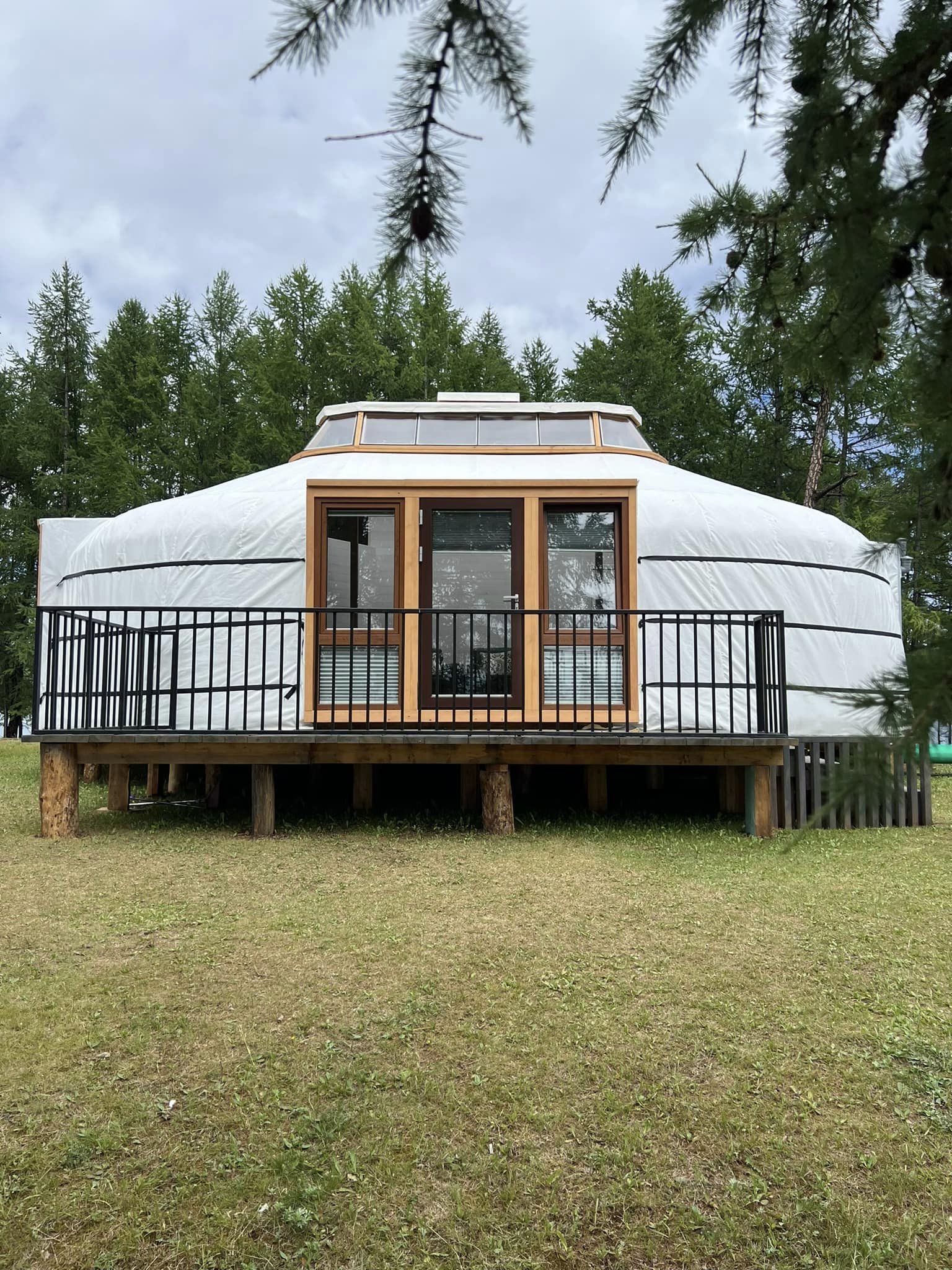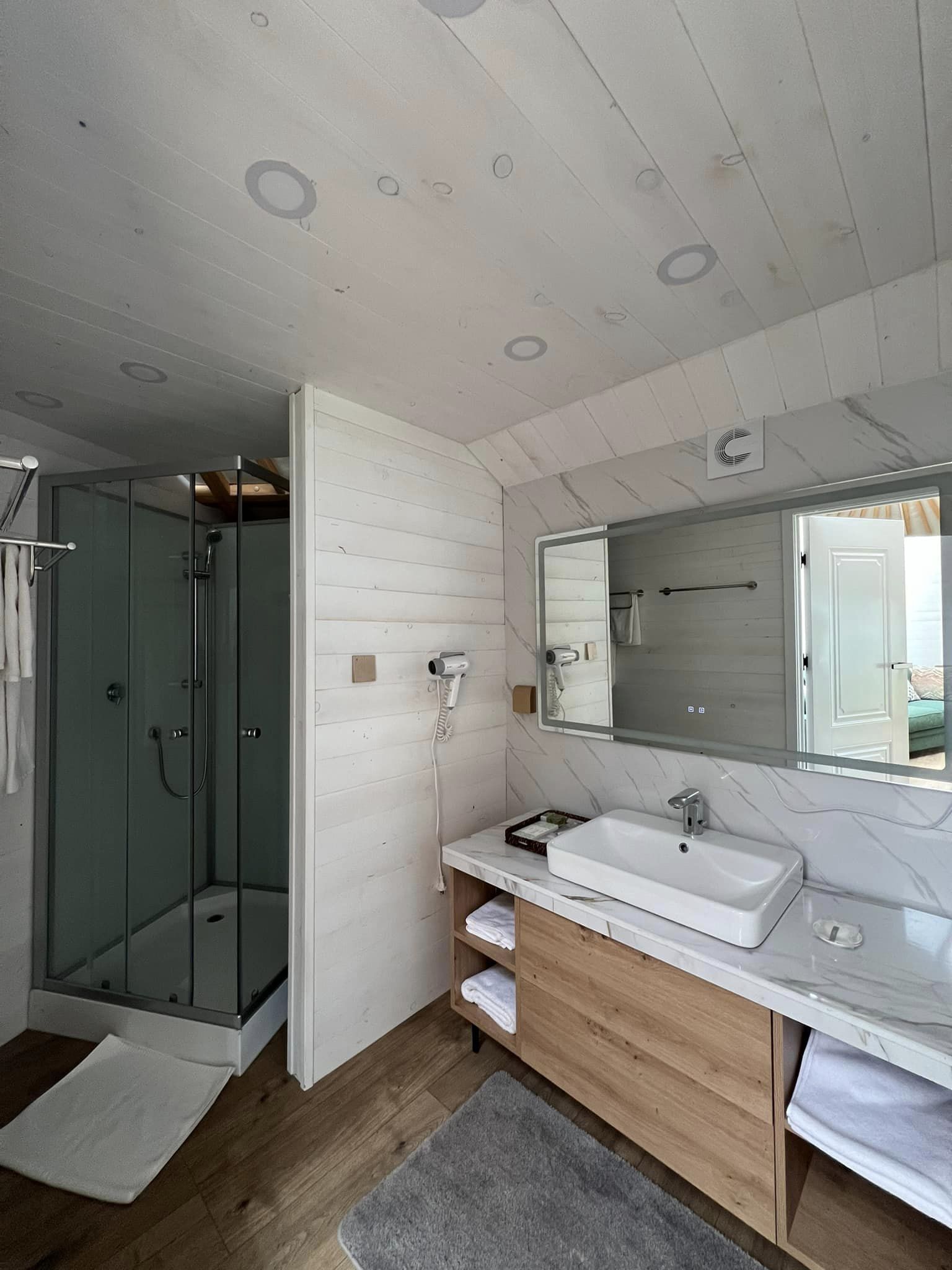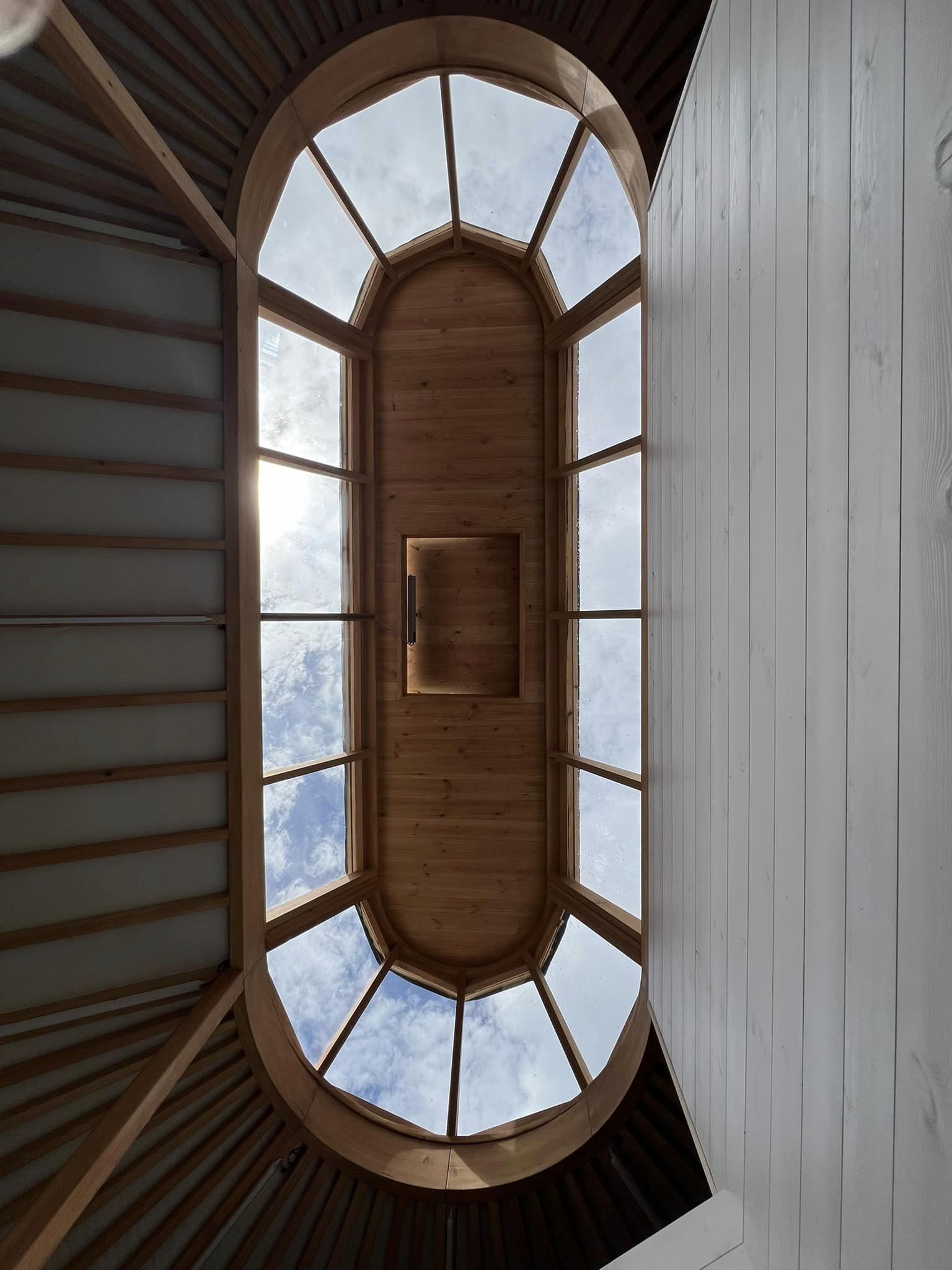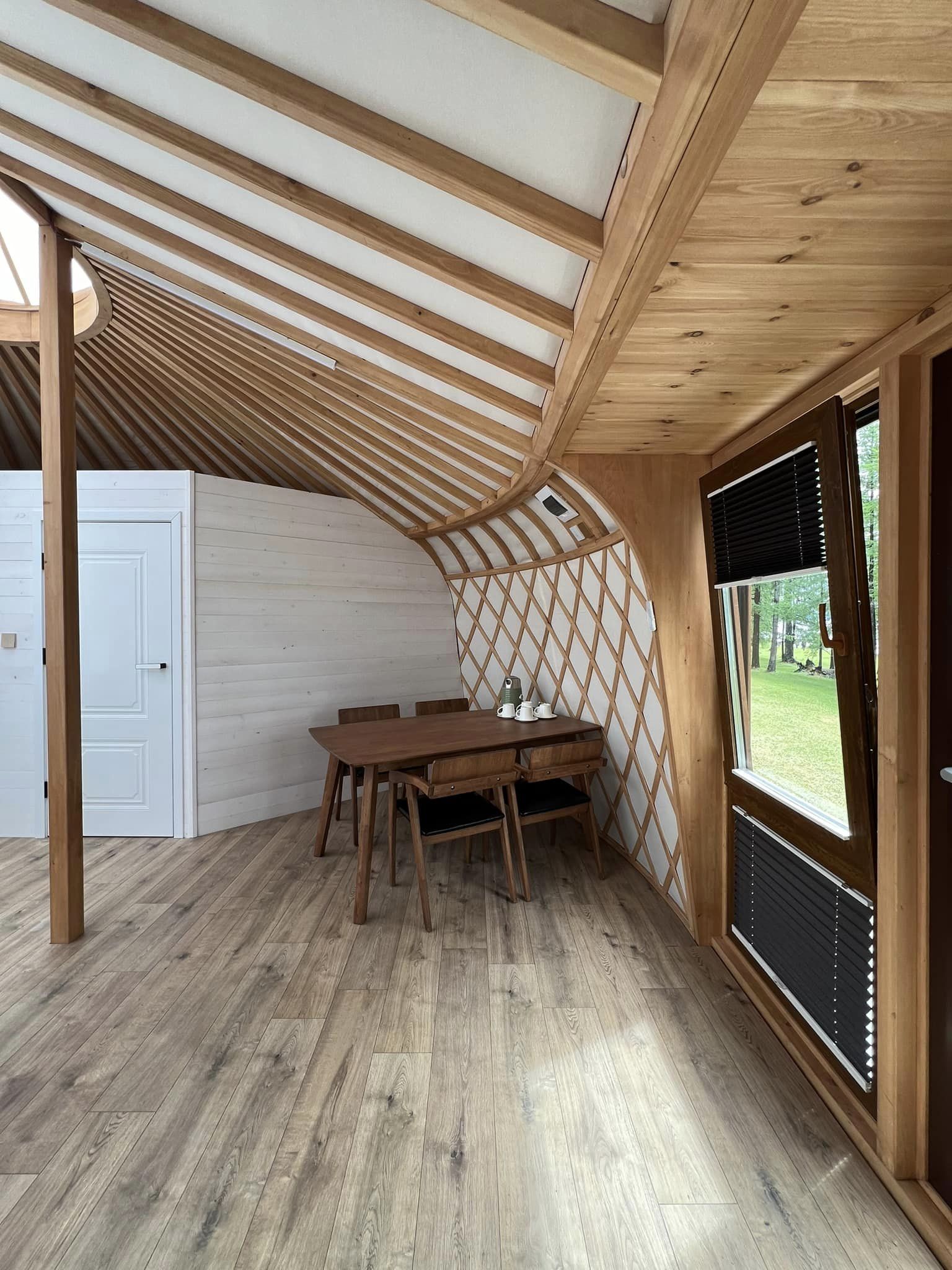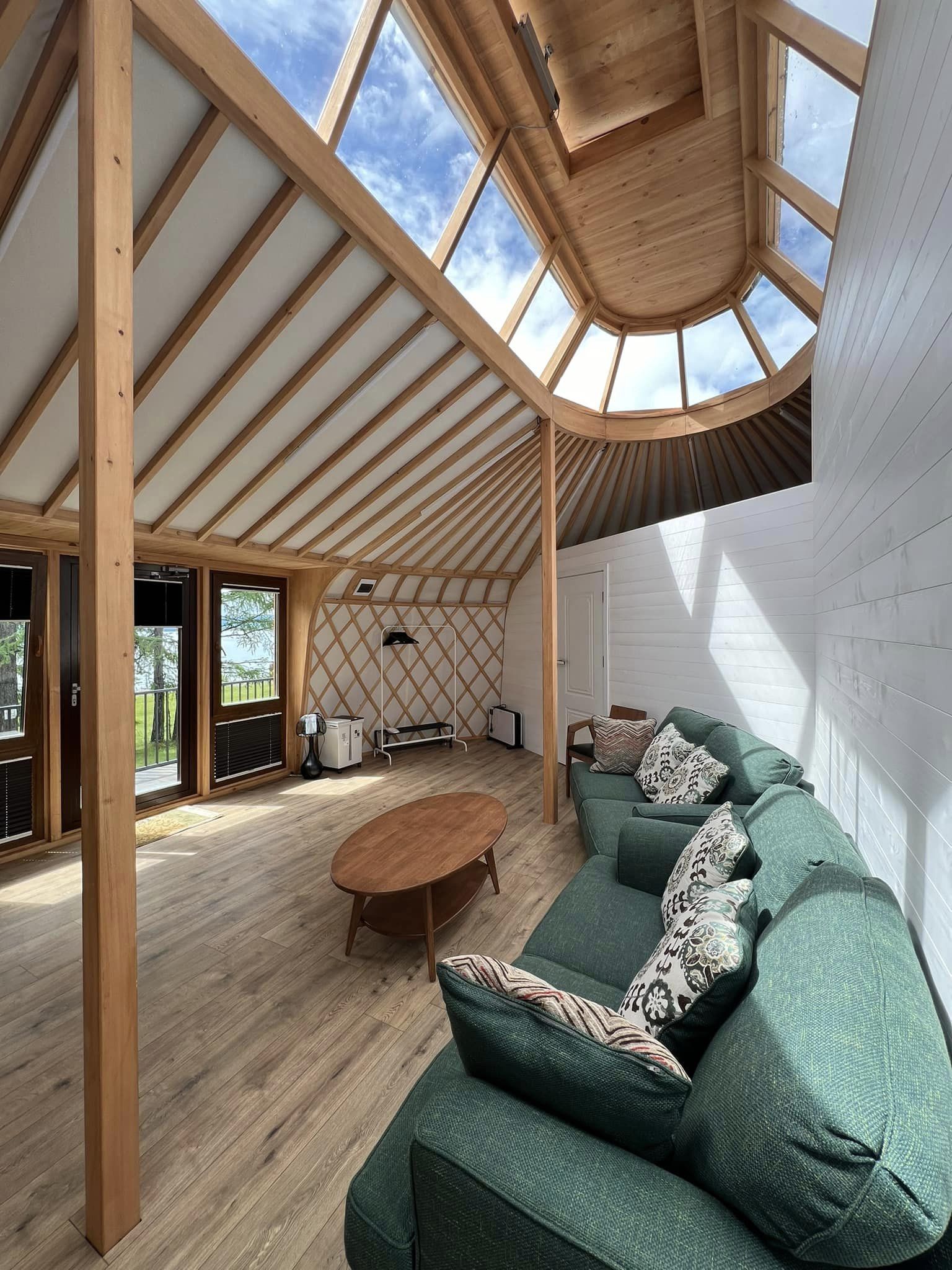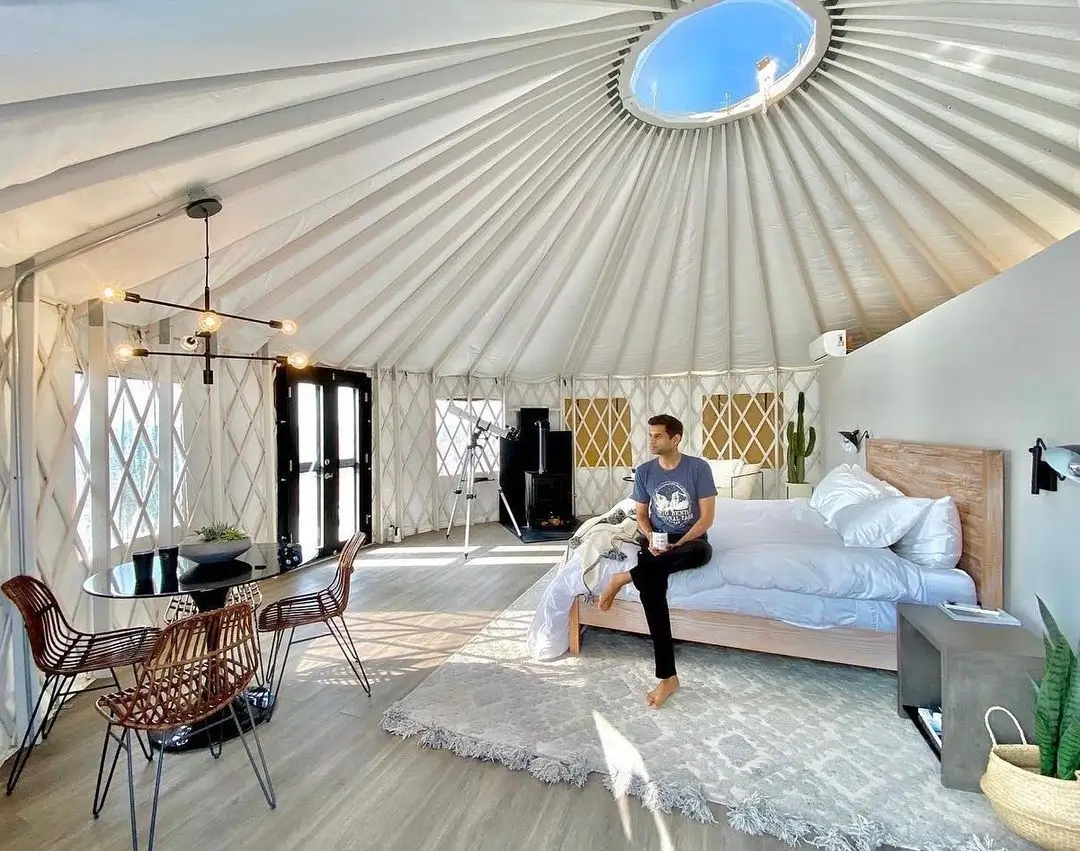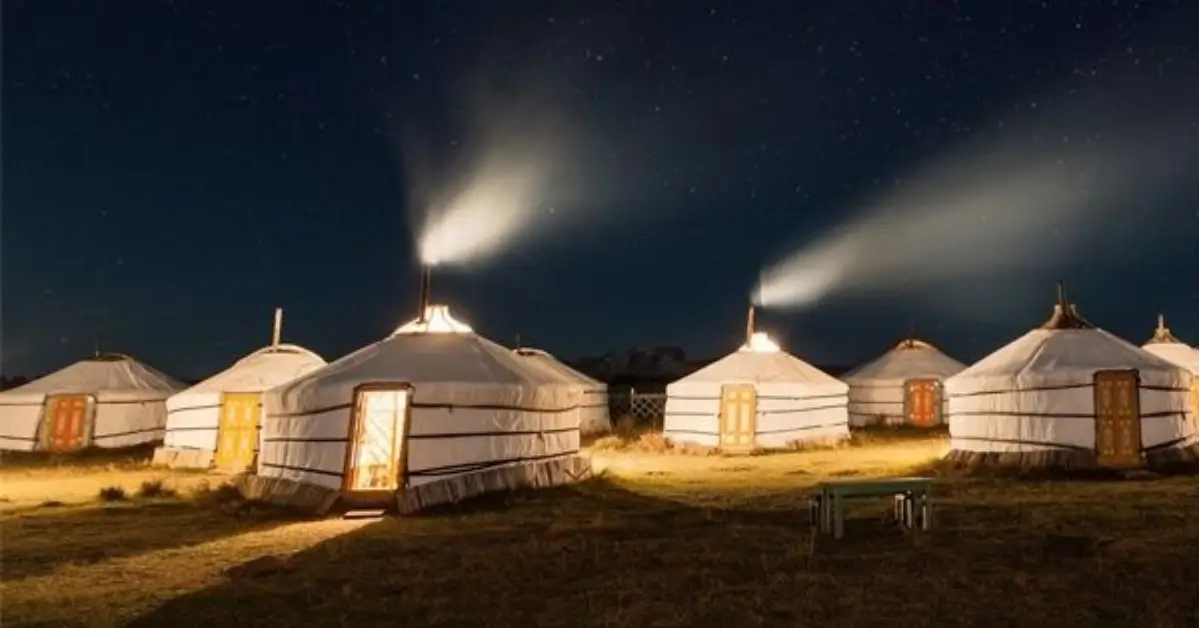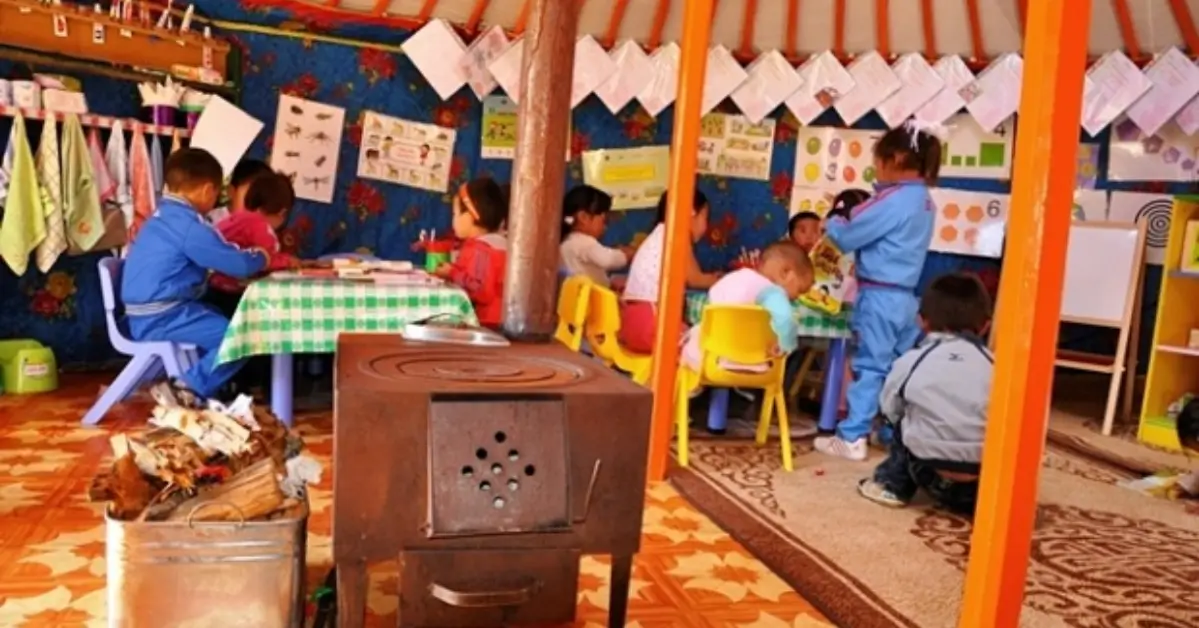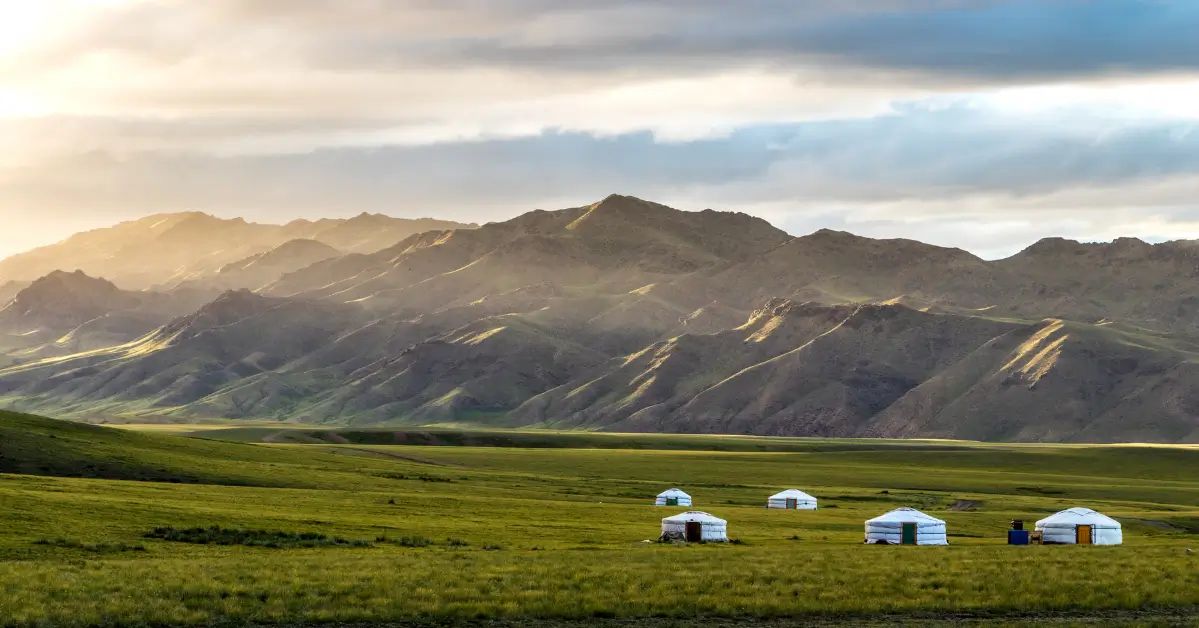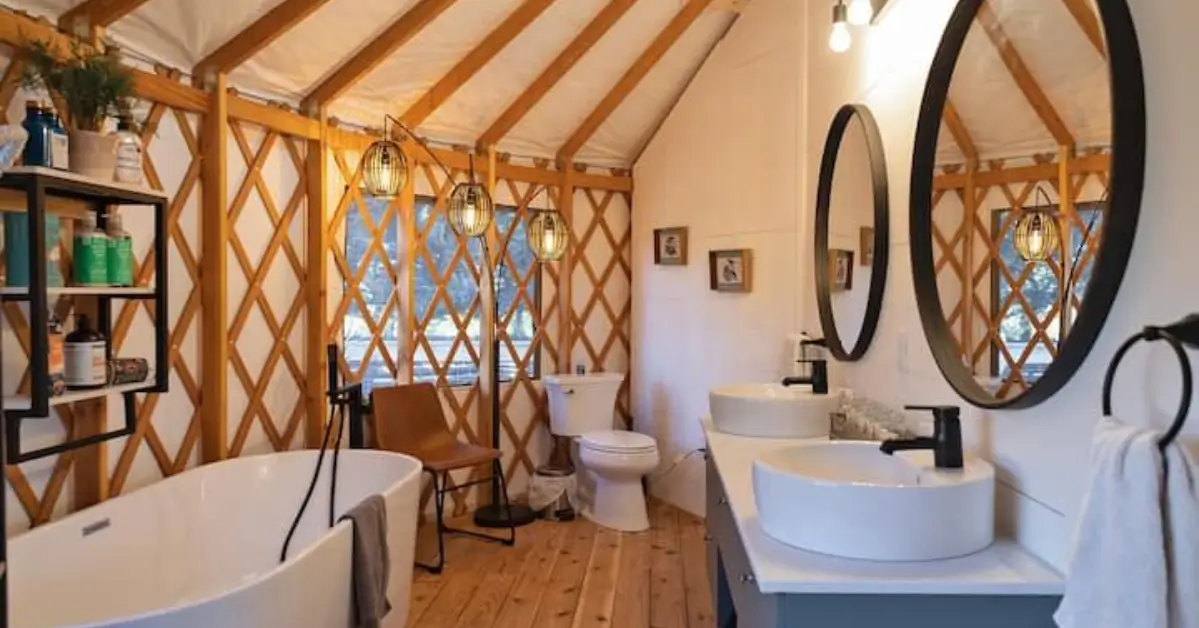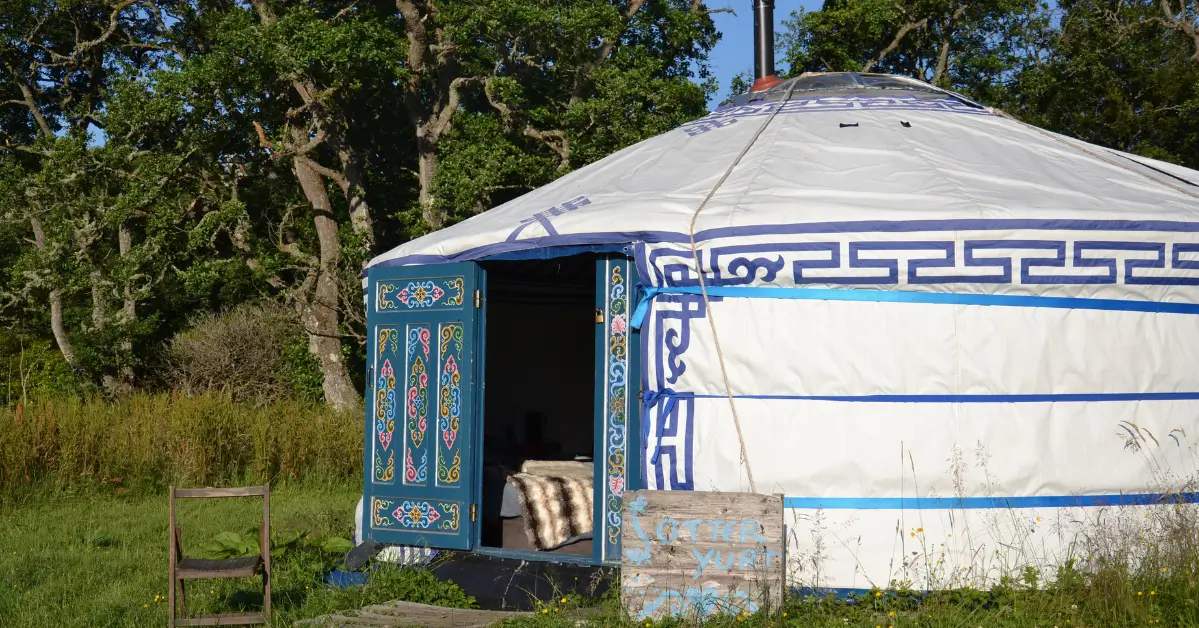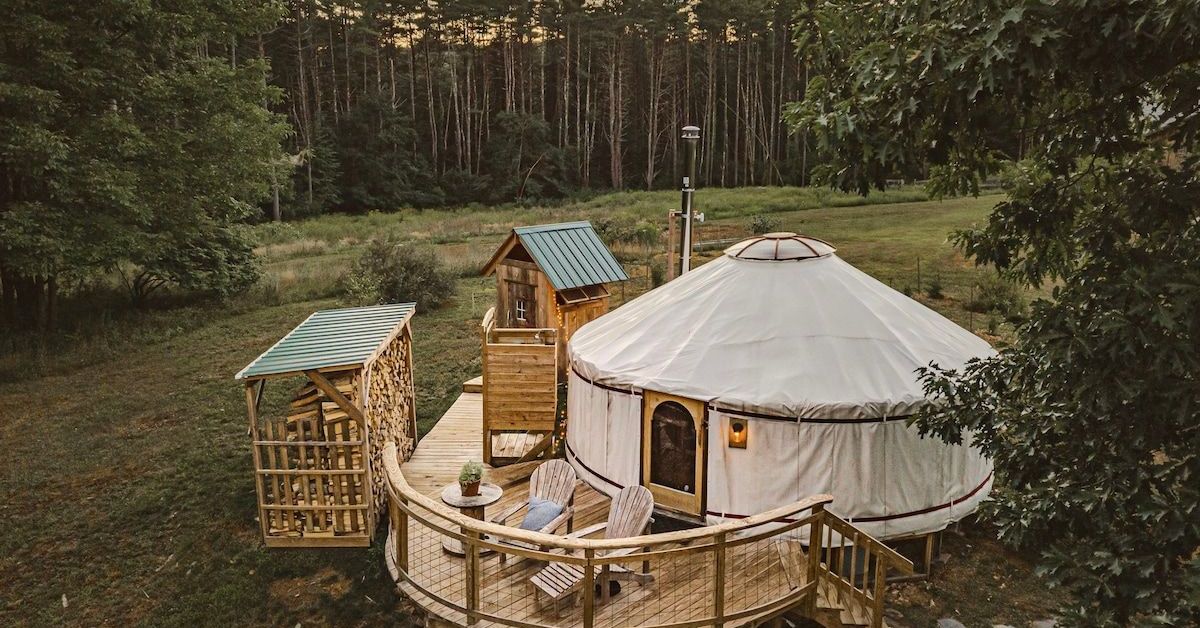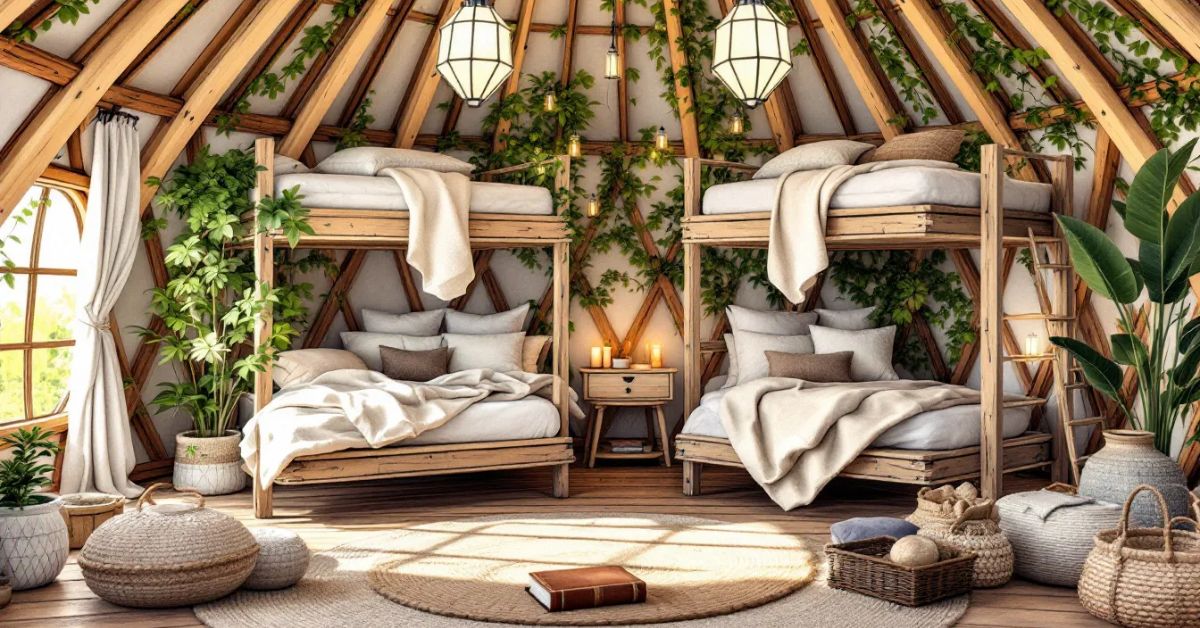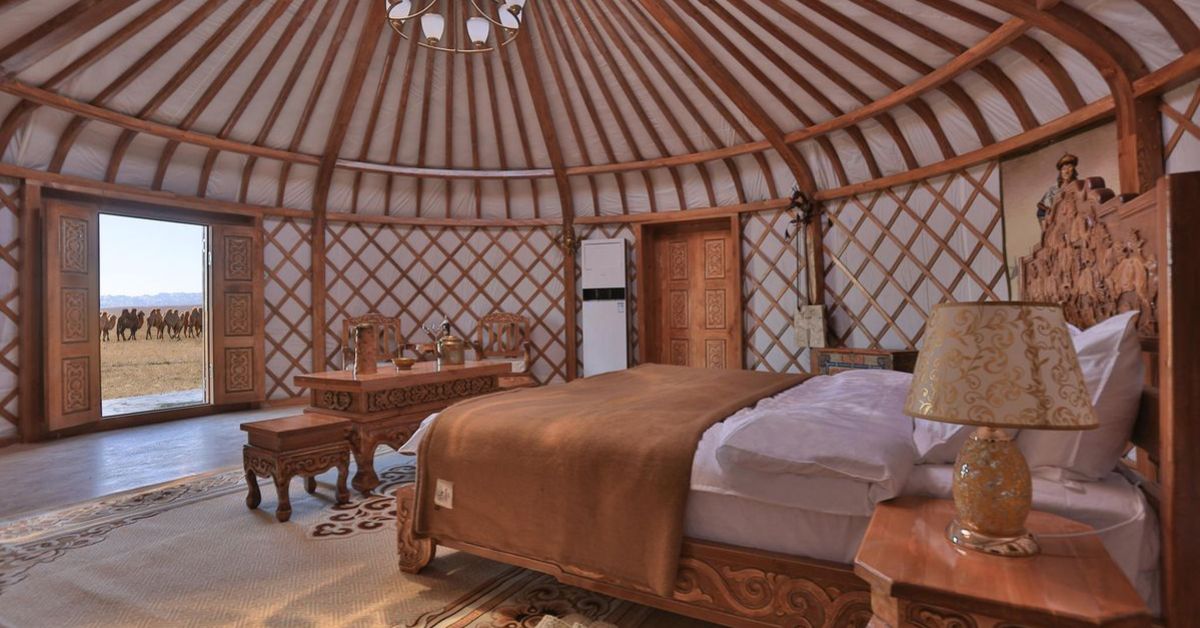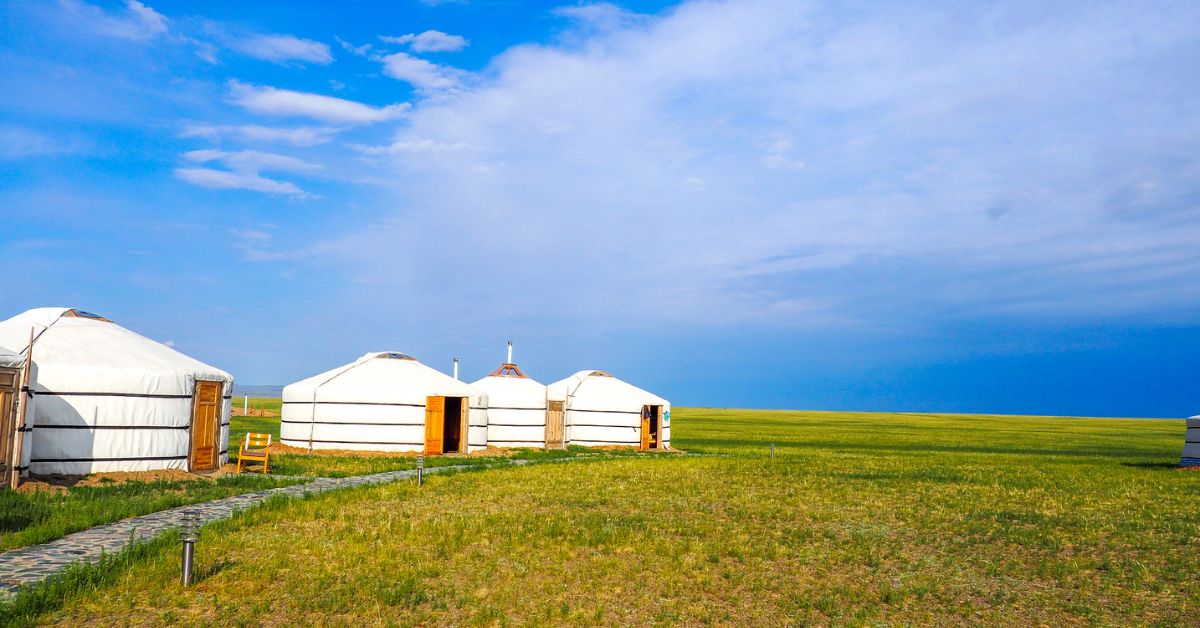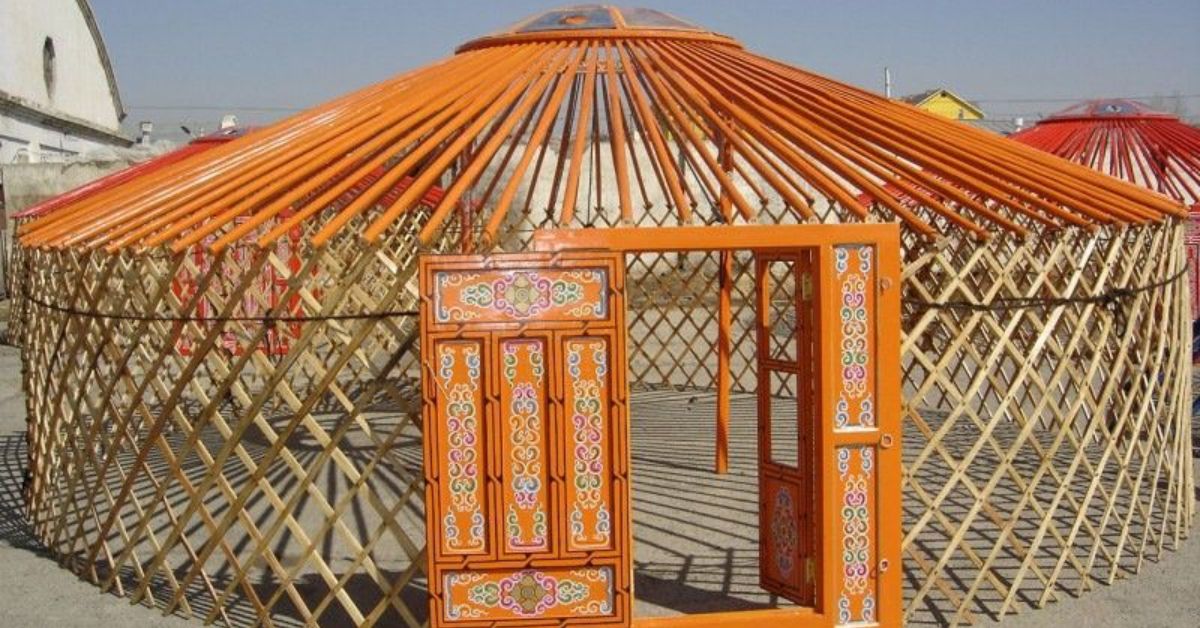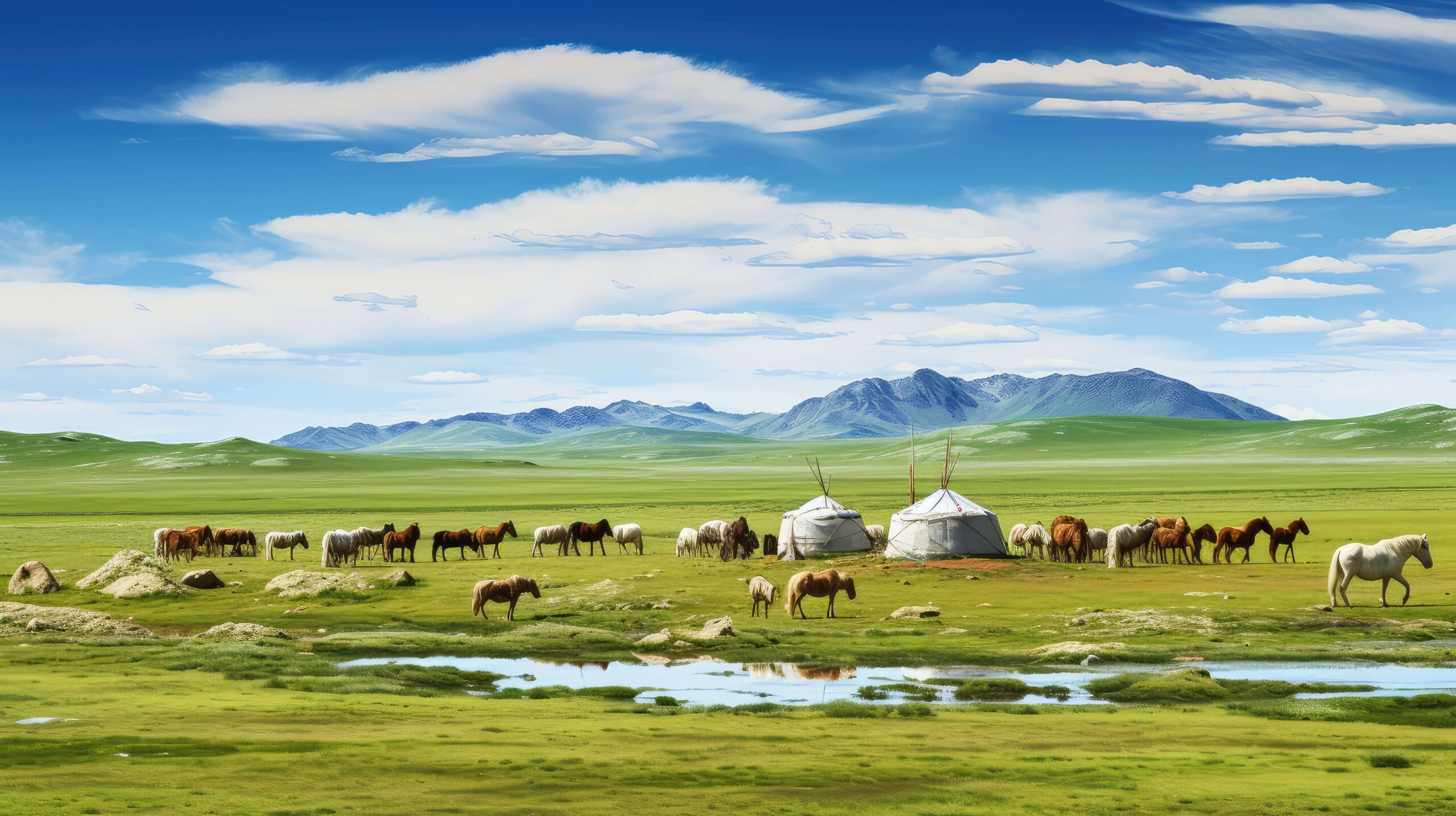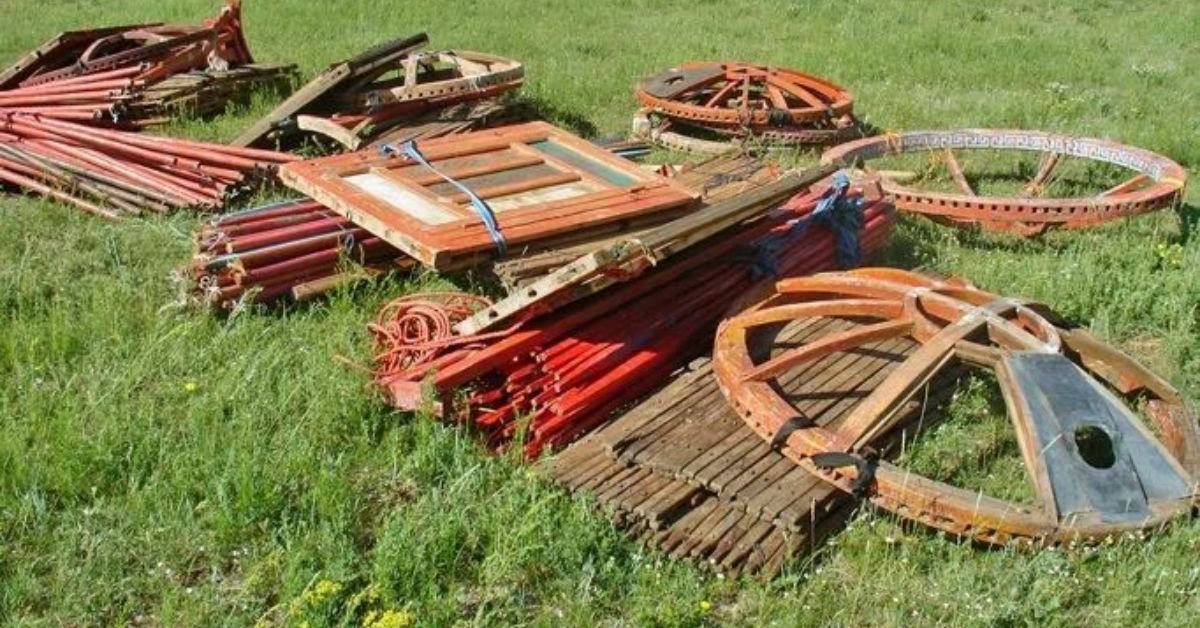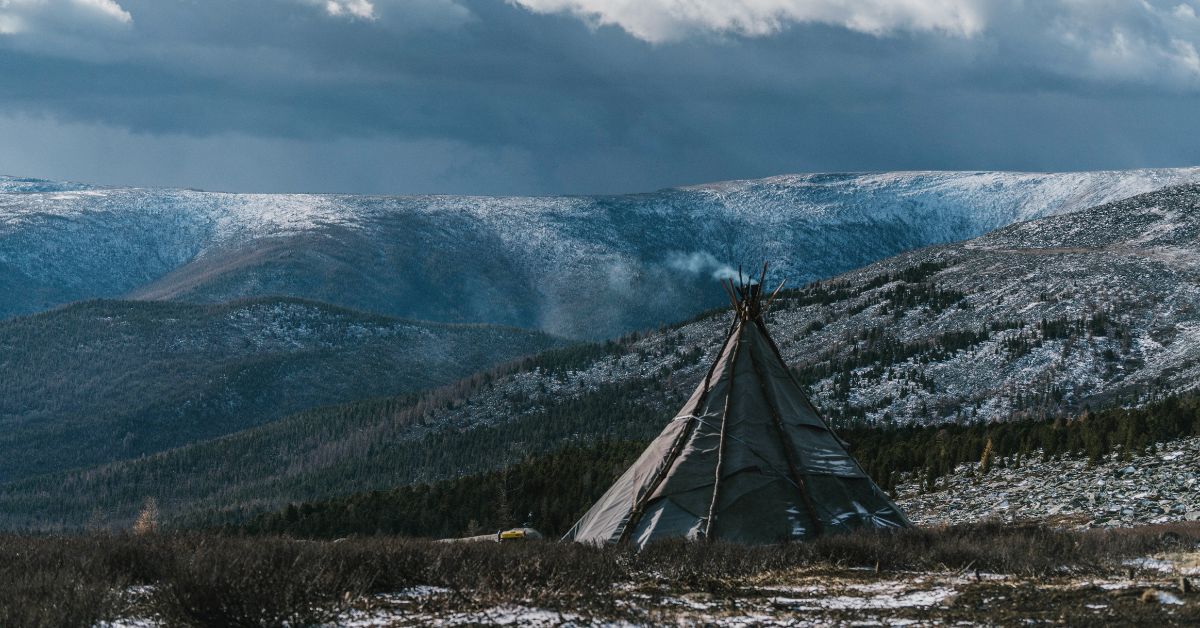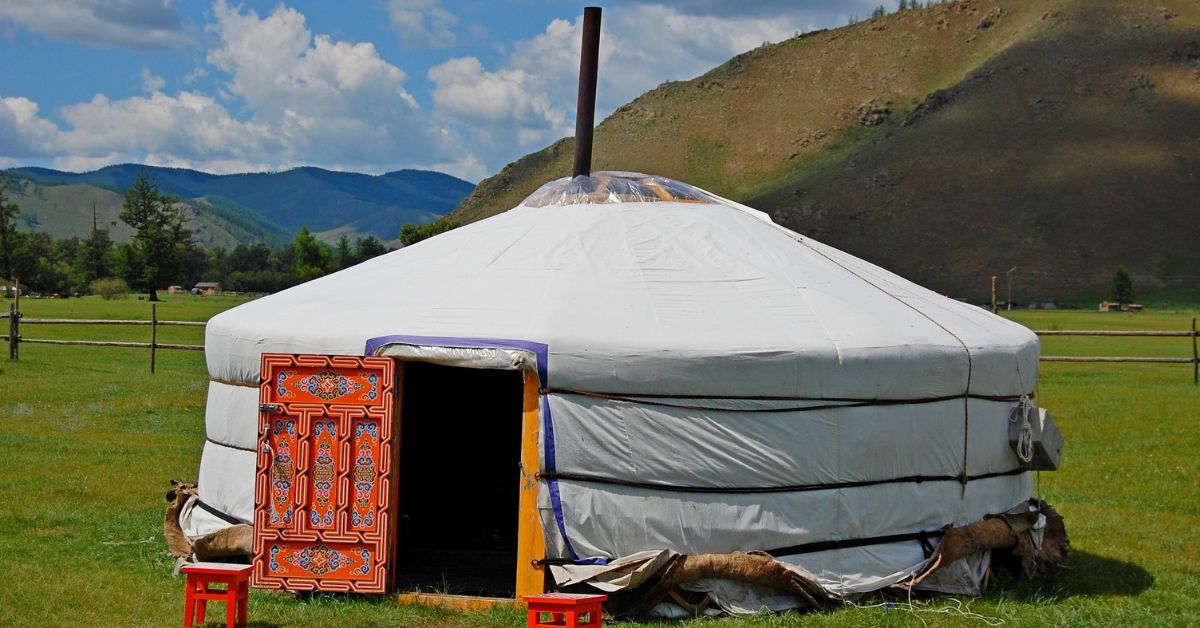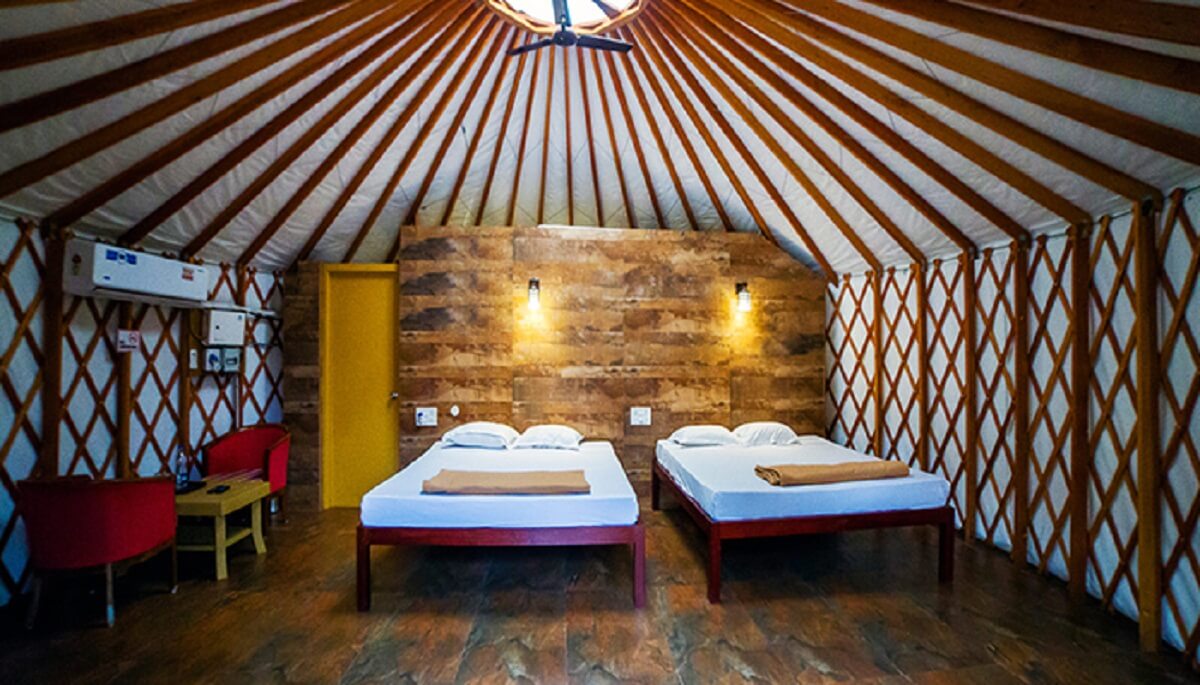For centuries, the Mongolian yurt, or ger, has been an essential part of nomadic life, offering a portable, climate-adaptive, and culturally significant dwelling. While traditional Mongolian yurts are deeply rooted in history, modern Mongolian yurts have emerged, blending traditional design with contemporary materials and comforts.
When considering purchasing options, it is important to look for authentic Mongolian yurts from reputable sellers who provide quality assurance and understand the unique hand-crafted nature modern design and construction techniques of these culturally significant dwellings.
This article explores the differences between traditional and modern Mongolian yurts, their materials, construction, and adaptability, helping you decide which is best suited to your needs.
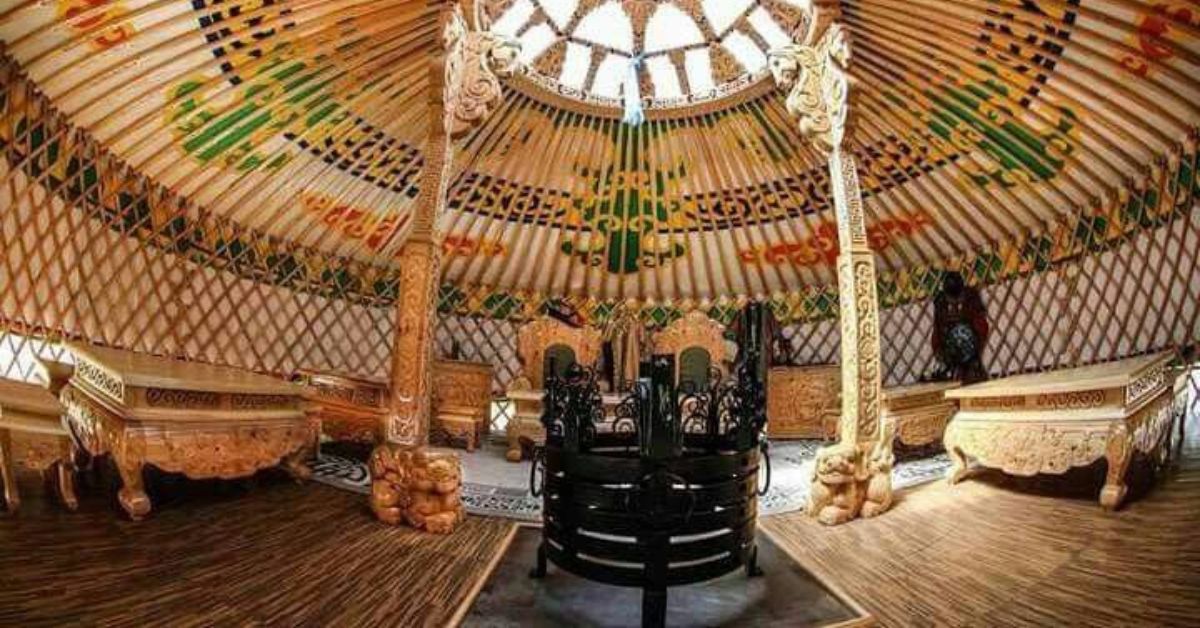
What is a Mongolian Yurt?
A Mongolian yurt, also known as a ger, is a traditional portable dwelling that has been a cornerstone of the nomadic lifestyle in Mongolia and other parts of Central Asia for centuries. This iconic structure is ingeniously designed to be both sturdy and mobile, making it ideal for the harsh and varied climates of the region.
The yurt structure consists of a wooden lattice frame, which provides a flexible yet robust skeleton. This frame is covered with layers of felt and canvas, materials that offer excellent insulation and protection against the elements.
At the heart of the yurt’s design is the toono, a distinctive dome-shaped roof opening that serves multiple purposes. It allows natural light to flood the interior, provides ventilation, and can be adjusted to control the indoor climate.
The yurt’s circular shape and the use of natural materials symbolize harmony with nature, reflecting the deep cultural and spiritual connections of Mongolian nomads to their environment. This traditional portable dwelling is not just a home; it is a living testament to the ingenuity and resilience of the nomadic way of life.
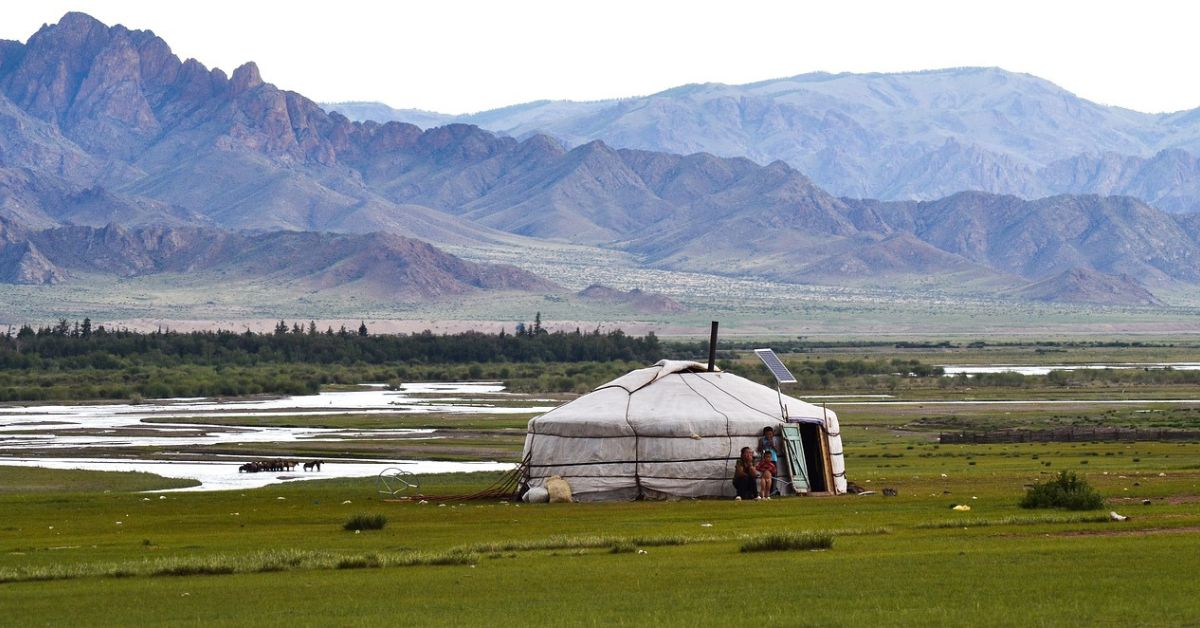
History and Evolution of Mongolian Yurts
The history of Mongolian yurts is as rich and enduring as the culture they represent. Tracing their origins back to the Bronze Age, these remarkable structures have been depicted in ancient Siberian rock etchings, highlighting rich history of their long-standing presence in Central Asia.
During the 4th to 6th centuries A.D., yurts served as the primary homes for the Huns warriors, showcasing their practicality and durability in the face of Mongolia’s challenging landscapes.
Despite the passage of time, the fundamental design of the yurt has remained largely unchanged, a testament to its effectiveness and adaptability.
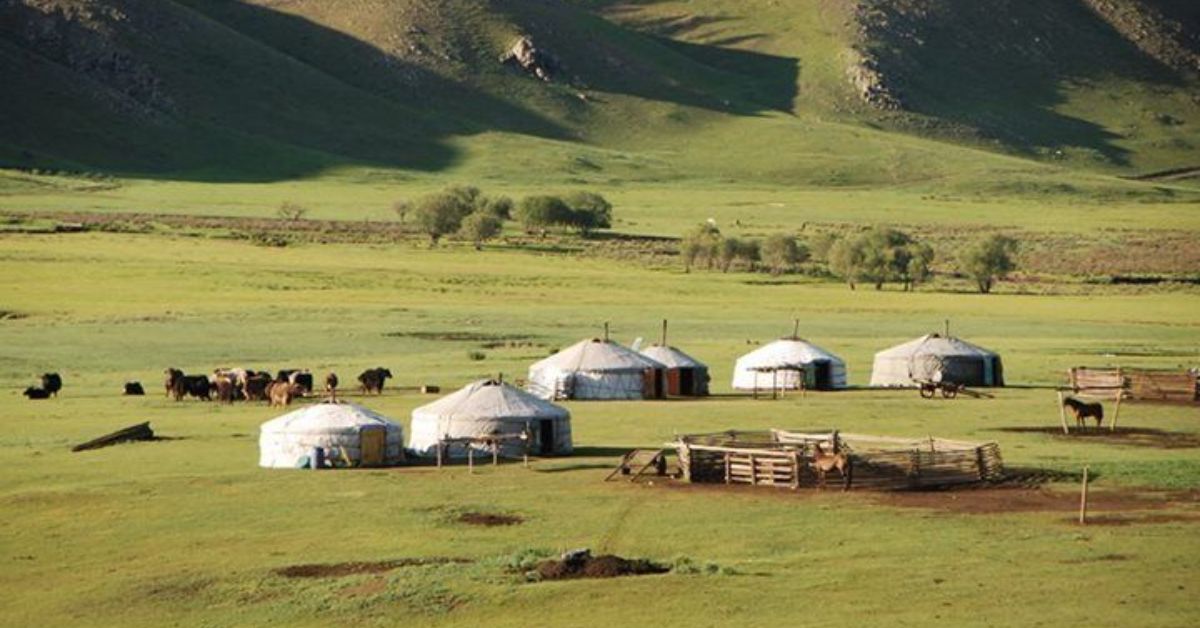
However, modern yurts have evolved to incorporate contemporary luxuries and eco-friendly features, making them suitable for a variety of uses beyond the traditional nomadic lifestyle. Today, Mongolian yurts are not only cherished by nomadic people but have also gained popularity among tourists and adventure seekers.
These modern adaptations blend the timeless appeal of the yurt with the comforts of modern living, offering a unique and sustainable accommodation option that honors its historical roots.
Traditional Mongolian Yurts: A Symbol of Nomadic Heritage
The first traditional ger or Mongolian yurt modern ger is a masterpiece of sustainable architecture, designed to be easily assembled, highly portable, and well-insulated for Mongolia’s extreme climate.
The traditional ger, historically significant as the primary dwelling for nomadic tribes, offers practical advantages such as effective heating and weather resistance.
Key Features of Traditional Yurts
✅ Materials: Made from wood or bamboo for the outer cover of the frame, covered with layers of felt insulation and a canvas covering.
✅ Structure: A wooden lattice wall (khana) supports the walls and roof poles (uni), all connected to the central roof wheel (toono).
✅ Interior: Modest furnishings, including low wooden beds, a centrally placed wood burning stove for heating and cooking, stove, wood stove, and symbolic Mongolian decorations.
✅ Portability: Can be assembled or disassembled within hours, ideal for nomadic movement.
✅ Climate Adaptability: Thick felt layers provide natural insulation in winter, keeping the yurt warm in the cold winter and cool in summer.
✅ Ventilation: The toono (roof opening) allows airflow and controls indoor temperature.
✅ Cultural Significance: Represents harmony with nature, eternity, and Mongolian heritage.
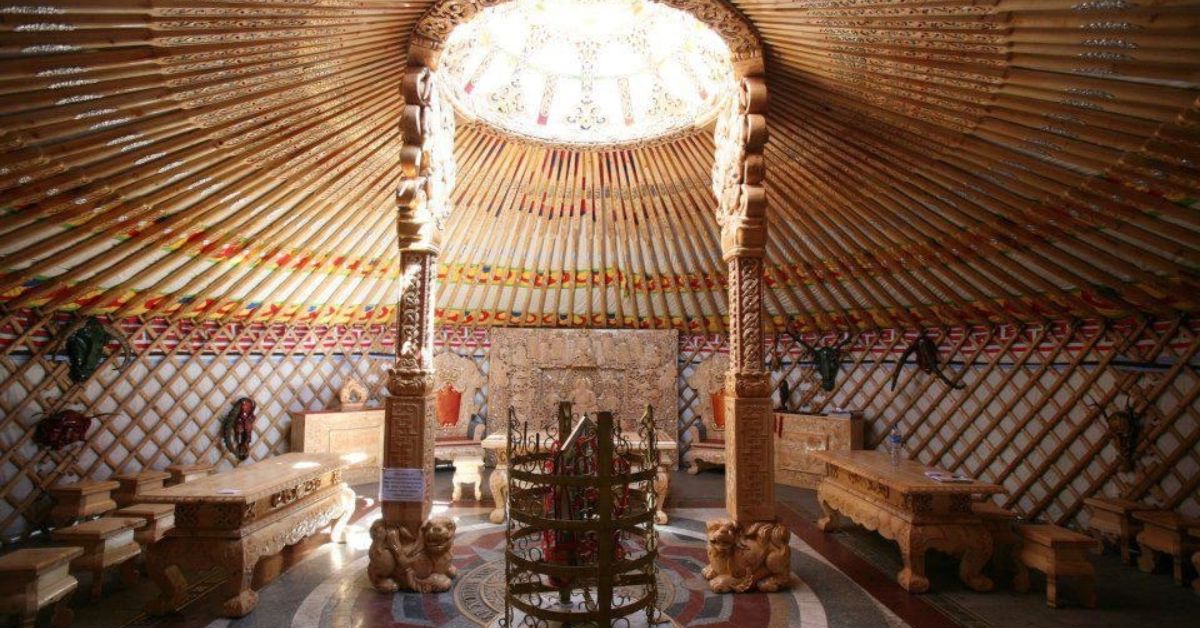
Modern Mongolian Yurts: Innovation with Tradition
While retaining the classic circular structure, modern Mongolian yurts incorporate advanced materials, improved insulation, and modern amenities, making them suitable for semi-permanent or permanent residences, glamping, and urban housing.
Key Features of Modern Yurts
✅ Materials: Use advanced materials like metal, treated wood composites, synthetic insulation, and durable canvas coverings.
✅ Structure: Retains the sturdy wooden frame, which contributes to the yurt’s durability and ability to endure extreme cold weather conditions. This frame is reinforced with modern engineering techniques for greater stability and longevity.
✅ Interior: Equipped with modern furniture, plumbing, electricity, a heating system, and even Wi-Fi.
✅ Portability: Some modern yurts are designed for easy setup with modular components, though less portable than traditional yurts due to added weight.
✅ Climate Adaptability: Enhanced with modern insulation materials, climate control systems, and waterproof coverings.
✅ Ventilation: Features advanced ventilation systems, including air conditioning and heating for year-round comfort.
✅ Urban & Tourism Use: Found in eco-lodges, glamping resorts tourist camps, and city outskirts, combining traditional aesthetics with modern convenience.

Insulation and Climate Control in Modern Mongolian Yurts
Modern yurts have significantly advanced in terms of insulation and climate control, making them versatile enough to be used in various environments. Traditional Mongolian yurts relied on thick layers of felt insulation, which provided excellent thermal regulation by trapping heat in the winter and keeping the interior cool in the summer.
While this method is still effective, modern yurts have taken insulation to the next level by incorporating materials such as fiberglass and foam insulation. These advanced materials offer superior thermal performance, ensuring a comfortable living space regardless of the external weather conditions.
In addition to improved insulation, modern yurts often feature sophisticated climate control systems. These can include heating and cooling systems that maintain a consistent and comfortable temperature inside the yurt.
The use of natural light and ventilation has also been optimized in modern yurts. Strategically placed windows and skylights allow for ample natural light, reducing the need for artificial lighting during the day.
Enhanced ventilation systems ensure a steady flow of fresh air, further contributing to a pleasant indoor environment. These innovations make modern yurts not only more comfortable but also more energy-efficient.
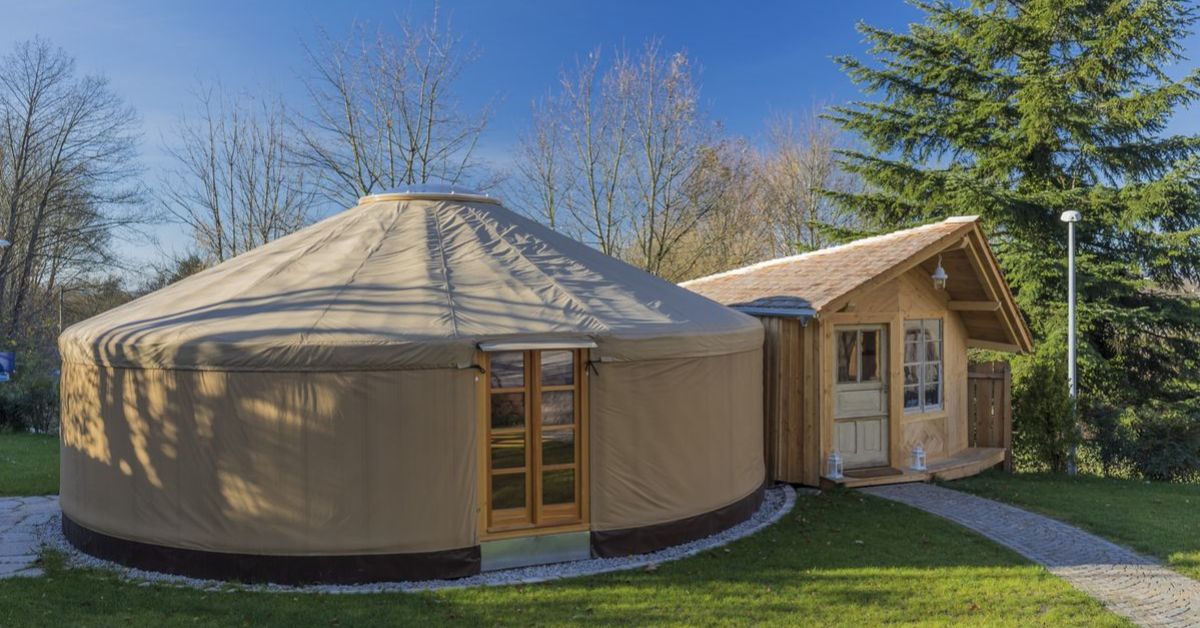
Eco-Friendly and Sustainable Mongolian Yurts
Mongolian yurts have always been eco-friendly and sustainable, thanks to their use of natural materials like wood, felt, and canvas.
The traditional yurt with wood structure is designed to be easily portable and disassembled, which minimizes waste and reduces the carbon footprint associated with construction of yurts.
This inherent sustainability has been further enhanced in modern yurts, which incorporate eco-friendly materials and sustainable practices into their design and construction.
Many modern yurt manufacturers prioritize the use of locally sourced materials, which helps reduce transportation emissions and supports local economies. Additionally, modern yurts often feature renewable energy systems, such as solar panels and wind turbines, to provide power.
These systems reduce reliance on fossil fuels and further decrease the environmental impact of living in a yurt. By combining traditional design principles with modern sustainable practices, Mongolian yurts offer an eco-friendly and culturally rich living experience that aligns with contemporary values of environmental stewardship.

Traditional vs. Modern Mongolian Yurts: A Side-by-Side Comparison
The following table highlights the key differences between traditional Mongolian yurts and their modern counterparts. Mongolian gers, the traditional portable dwellings of nomadic tribes in Mongolia, have evolved from simple homes to contemporary eco-friendly structures:
Comparison
| Feature | Traditional Yurts | Modern Yurts |
|---|---|---|
| Materials | Natural materials (wood, felt) | Advanced materials (metal, canvas) |
| Insulation | Natural wool felt | Modern insulation materials |
| Construction | Simple, easily assembled | Modular, sometimes more complex |
| Interior Amenities | Basic, minimalistic | Modern, luxurious |
| Climate Adaptability | Good natural insulation | Enhanced with modern tech |
| Cultural Significance | Deeply traditional and symbolic | Blends tradition with modernity |
| Ventilation | Roof wheel for ventilation | Advanced ventilation systems |
| Mobility | Designed for frequent relocation | Often more permanent or semi-permanent |
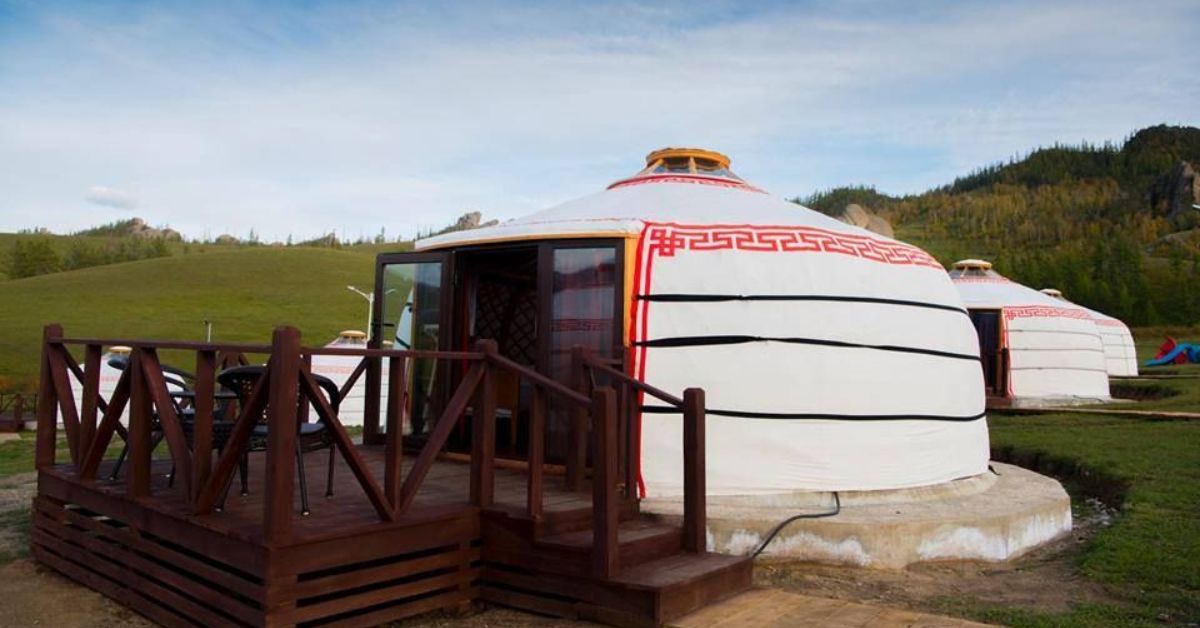
Which Type of Yurt is Right for You?
✔️ Choose a Traditional Mongolian Yurt If…
- You want an authentic Mongolian experience with traditional materials.
- You appreciate nomadic-style living and sustainability.
- You prefer historical charm over modern conveniences.
- You value the cultural significance and historical context of the Mongolian ger, a traditional dwelling that reflects a deep connection with nature and the nomadic lifestyle.
✔️ Choose a Modern Mongolian Yurt If…
- You need a comfortable, semi-permanent or permanent living space.
- You want modern amenities like electricity, heating, and plumbing.
- You are using the yurt for eco-tourism, glamping, or urban housing.

Final Thoughts: The Timeless Appeal of Mongolian Yurts
Whether you’re drawn to the heritage and authenticity of a traditional Mongolian yurt or the comfort and modern upgrades of a modern Mongolian yurt, both offer a unique way to experience Mongolian culture and architecture.
The diversity of yurts in Central Asia and other countries, including the unique designs, materials, and decorations of Turkic yurts, adds to the rich tapestry of options available.
Would you prefer the classic nomadic lifestyle or the luxury of a modern yurt? Let us know in the comments!
